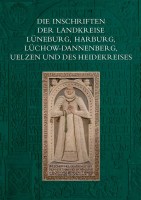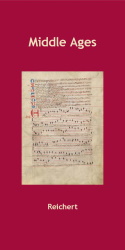Search
Gesammelt und bearbeitet von Sabine Wehking
Die Inschriften der Landkreise Lüneburg, Harburg, Lüchow-Dannenberg, Uelzen und des Heidekreises
2024
19.0 x 27.0 cm, 752 p., 152 illustrations color, 355 illustrations b/w, 104 Tafeln, hard cover with dust jacket
ISBN: 9783752007336
19.0 x 27.0 cm, 752 p., 152 illustrations color, 355 illustrations b/w, 104 Tafeln, hard cover with dust jacket
89,00 €
ISBN: 9783752007336
Short Description
In 620 individual articles, this volume contains an annotated edition of inscriptions from five districts south-west of the Elbe up to the year 1650. The inscriptions focus on the noble families living in the countryside with their manors, family chapels and patronage churches. Other focal points are the Bardowick canonry of St Peter and Paul, the town of Uelzen and the inscriptions referring to the Lüneburg dukes as princes and their officials.Description
In 620 individual articles, this volume contains the annotated edition of inscriptions from five districts [Landkreise] south-west of the Elbe up to the year 1650 covering the northern part of the former Principality of Lüneburg. The districts of Lüneburg, Harburg, Lüchow-Dannenberg, Uelzen and the Heidekreis surround the city of Lüneburg and thus also the monastery of St Michaelis with its numerous patronage churches in the villages. A large number of inscriptions illustrate the relationship between the town of Lüneburg and its surrounding area. While the inscriptions of the city of Lüneburg (DI vol. 100) focus on the patriciate, the inscriptions in the neighbouring districts concentrate on the landed aristocratic families with their manors, family chapels and patronage churches. Other focal points are the Bardowick canonry of St Peter and Paul, the town of Uelzen and the inscriptions referring to the Lüneburg dukes and their officials.The introduction to the volume establishes links between the inscriptions and the history of the Lüneburg region. It analyses the inscriptions of individual groups of objects such as bells, funerary monuments, church utensils and church furnishings from various points of view. The catalogue entries are arranged chronologically. They provide a description of the object and a reproduction of the texts with the abbreviations broken down. Latin and Low German texts are translated. The subsequent commentary discusses important questions relating to the inscription or the object. Ten indexes make the catalogue section accessible to the reader. An extensive illustration section completes the edition. A special feature of this volume is the list of bells made by the Lüneburg foundry family Voss in 1723, edited in an appendix. With 155 bells listed the list provides a detailed insight into the operation of a foundry based in Lüneburg.




 Preface
Preface

 Neuerscheinungen 2023/2024
Neuerscheinungen 2023/2024
 Gesamtverzeichnis 2023/2024
Gesamtverzeichnis 2023/2024
 Katalog Oriental Studies & Linguistics
Katalog Oriental Studies & Linguistics
 Mittelalter
Mittelalter
 Deutsche Inschriften
Deutsche Inschriften
 Musiktherapie
Musiktherapie
 Literaturen im Kontext
Literaturen im Kontext